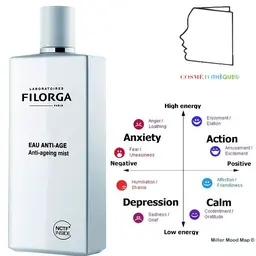
This young creation, which continues to be the object of the permanent torment of a large number of professionals in the cosmetic industry, good or bad, is still in the news. But who is she? After having been in force for more than 30 years before being entirely revised in the form of Regulation (EC) No 1223/2009, the European cosmetics regulation has just celebrated its 40th anniversary.
France played a leading role in its development at European level following the unfortunate accident of Talc Morhange, by proposing a Directive to the EEC Council in 1972. It will become Directive 76/768/EEC, which laid the regulatory foundations for modern cosmetology. It introduces an essential notion with a new definition of cosmetics, abandoning the term beauty product. Article L658-1 of the Public Health Code now states that cosmetic products and personal hygiene products are defined as"cosmetic products and personal hygiene products". all substances or preparations other than medicinal products intended to come into contact with the various superficial parts of the human body or with teeth and mucous membranes, in order to clean them, protect them, keep them in good condition, change their appearance, perfume them or correct their odour". .
We cannot attack a new reign, which will be at least as long, without taking stock of these first decades. Who better than Dr. Gerald Renner, Director of Regulatory Affairs at Cosmetics Europe, could give us his personal analysis of the regulatory situation? With the collaboration of Raffaëlla Berioli, Scientific and Regulatory Advisor at the FEBEA, he offers us his vision through a personal selection of major events. We thank them for this commented trip into the world of cosmetic regulation. In addition, I would like to remind you of these two publications, which also provide an update on the same theme: • 40 years of European cosmetics regulation on the Observatoire des Cosmétiques, • Happy birthday to you! Our cosmetic regulation is 40 years old on The Conversation.
Enjoy your reading.
Jean Claude Le Joliff
Forty years of harmonised European cosmetic legislation Regulatory milestones: A personal selection
In 1976, the year the European Union's Cosmetics Directive was adopted, I was 9 years old and living in a country that would join the EU about 20 years later. My contact with cosmetics was limited to a daily dose of toothpaste and an occasional hint of soap or shampoo, and the EU was even further away from me than the Moon. That is why, when Austria joined the EU in 1995 and I had the opportunity a year later to join Colipa (now Cosmetics Europe') to work on ingredient safety and the regulatory aspects of the Cosmetics' Directive, I had a lot to catch up on. Twenty years later, after an amendment, some 50 technical adaptations and a recasting, I fear that I have become one of the veterans of the sector', which apparently allows me to present the key regulatory milestones passed in European cosmetic legislation.
1976 - The EU Cosmetics Directive - 76/768/EEC
When I arrived in the sector, it seemed obvious to me that the aim of the European directive was to guarantee the safety of cosmetics - period. But on closer examination, safety could also be ensured through national legislation, and indeed, cosmetic laws already existed in EU Member States before 1976. I was quickly curious to find out if there were perhaps other reasons for the European law…
Speaking to"veterans of the sector" at the time, I was surprised to learn that it was the cosmetics industry that had been at the origin of the draft Cosmetics Directive in the early 1970s: it had realised that the future of legislation was no longer at national level but at European level. Different laws and safety standards had simply become incompatible with the concept of free movement of goods.
This is a trend that I have seen repeated many times over the last 20 years: the European cosmetics industry is generally not hostile to regulation, but it seizes opportunities arising from clear and easily usable rules. If harmonised within the EU, these rules can create a level playing field and legal certainty for a market of (today) 550 million consumers. Credible EU legislation can also create consumer confidence in the safety of cosmetics, regardless of where they are manufactured.
The original objective of the Cosmetics Directive can be described as follows: "requirements and safety standards that allow the free movement of cosmetics, because they ensure a level of consumer protection that is accepted by all EU Member States".
The objective and essential principles of this quarantenary text remain of remarkable relevance today and continue to serve as an inspiration for emerging legislation throughout the world. - A definition of cosmetics, based on the physico-chemical form, area of application and intended function, that includes make-up, perfumes, skin care and toiletries, It establishes a clear border with medicines, medical devices and biocidal products, This includes cosmetics that contribute to public health, such as toothpastes or sun products. - Products placed on the EU market must be safe under normal conditions of use. - No pre-market registration, but market monitoring by national authorities. - Legal responsibility for safety and compliance lies with the entity responsible for placing the product on the EU market. - The name and address of this entity, which must be established in the EU, must appear on the label. - A positive / negative list approach for specific ingredients. - Member States are not allowed to prohibit or restrict the placing on the market of products which comply with EU legislation (except in cases of justified emergency measures responding to a serious risk to the population).
1979 - The CSC, scientific committee of cosmetology (later SCCNFP, then CSPC, now CSSC)
The Directive provided that certain ingredients should be subject to specific regulations (prohibition / restriction / authorisation) for a particular cosmetic use. As has been confirmed on several occasions (the most radical case being the"Angelopharm" case), such measures must be based on a sound scientific approach. While in most cases the basic safety data are provided by industry, their review must be carried out by independent scientists.
In January 1978, the European Commission published a decision on the establishment of a scientific advisory committee which"shall may be consulted by the Commission on any problem of a scientific or technical nature in the field of cosmetic products and in particular on the substances used in the preparation of cosmetic products and on the composition and conditions of use of such products. The members of this committee were chosen on the basis of scientific excellence and independence, and were asked to work in a transparent manner. In January 1979, the CSC met for the first time to provide a scientific assessment of the risk of"chloroform use in toothpastes", and since its members have continued to work… Renewed several times over time, this committee is recognised worldwide and its hundreds of opinions continue to serve as the basis for regulatory decisions in the EU and beyond.
1980s - Introduction of positive lists
Most ingredients are available to cosmetic companies as long as their use guarantees the safety of the cosmetic product. However, for certain types of priority ingredients, European regulators considered from the outset that an additional"safety net" was needed to ensure a high level of safety for the consumer. This is how the concept of positive lists was defined in 1978 in the Cosmetics Directive. For the following types of ingredients, the European regulator considered it necessary to set appropriate concentrations and conditions of use. - Preservatives: they play an important role, for example, in controlling / destroying micro-organisms and thus avoiding the risk of microbial contamination. Yet this activity can also pose a toxicity problem for the consumer. - UV filters: they play an important role in protecting against ultraviolet rays. Consumers and authorities must be able to have confidence in their safety and effectiveness in sometimes extreme conditions (intense exposure to UV radiation). - Colours: they can be used in high concentrations in certain cosmetic products. Safety concerns regarding"coal tar dyes" (and in particular certain impurities) have led to general regulation of food and cosmetic dyes by the US FDA. This served as an inspiration for cosmetic regulations in EU Member States, and ultimately led to the need for a positive list. - Hair dyes: these are either dyes (temporary hair dyes) or colourless precursors that react on contact with a coloured molecule in the hair (permanent hair dyes). In particular, reactive precursors may raise safety concerns. - Antioxidants: I am not sure why they were proposed in the positive lists. There may have been a link to the discussions on BHA and BHT as food additives, which took place when the Cosmetics Directive was being drafted.
Many substances were included in the original text as"provisionally authorised", but it took several years before a first safety assessment was carried out and the positive lists of preservatives (1982), UV filters (1983) and colouring (1988) formally established. Although a significant number of hair dyes were evaluated, the ingredients continued to be regulated by the general restrictive lists of the Directive. The objective of a positive list was reconfirmed in 2009, but its introduction is likely to take a few more years. The initial idea of a positive list for antioxidants disappeared over time, probably because of growing evidence of their safety in the food sector.
One could argue that the introduction of positive lists is not really a"key step" but rather a long and winding road, which has mobilised considerable resources, both among industry and regulators. However, the end result of this exercise is a key step, an innovative and effective approach to managing new ingredients. A side effect of the evaluation of hundreds of ingredients was to clarify the data and review requirements set out in the SCC Notes of Guidance for the Safety Evaluation of Cosmetic Ingredients (1982, first updated in 1990).
Despite high quality data standards and requirements, the predictable and transparent framework for the inclusion of new ingredients in positive lists has enabled the European cosmetics industry to maintain its global leadership in ingredient innovation. Unfortunately, recent regulatory developments have created a gap between the data requirements for new cosmetic ingredients and the availability of this data to industry. I will come back to this later.
1993 - The 6th Amendment
With the completion of the positive lists, more regulatory resources were available for a comprehensive review of the Cosmetics Directive. The resulting"6th amendment" improved, supplemented and clarified the main principles of the legislation. On the other hand, the purpose of the text, its scope, the requirement for safe products, the concept of responsible person and the obligation of control within the market by the authorities were not changed.
The most significant change was the requirement for a Product Information Package (PIL), which includes security assessment and claim justification. This new requirement has made market surveillance more effective and efficient, clarifying and harmonising the type of information expected by the authorities to decide on the safety and conformity of a product. Very little guidance was given in the 1993 Directive regarding the format or level of detail to be applied to the DIP, the security assessment and the justification of claims. To some extent, the good practice guidelines developed by Colipa (Cosmetics Europe today) could fill this gap, but over time, a real heterogeneity in the quality and depth of DIP developed in the sector.
What should be noted is that the 6th amendment also introduced mandatory ingredient labelling. Inspired by the US INCI system, the labelling approach has been slightly adapted to take into account the multiple EU languages (e.g. use of Latin rather than English for common ingredient names).
In terms of milestones, the 6th Amendment is certainly one of the most important, if not the most important. Not because it created a new regulatory approach, but because it provided the tools (DIP, safety assessment, claims justification and ingredient list) to effectively apply the existing approach.
The 6th amendment also encouraged the development of a new sector. Since 1993, there has been an increasing business opportunity for"cosmetic safety assessors" as well as for specialised training bodies. The European directive, in its 6th amendment form, has also become a source of inspiration for many emerging legislations in Asia and Latin America. Given the impact it has had on cosmetic industry practices and regulations worldwide, it is surprising that the text of the 6th amendment is only 5 pages long.
1993 - Ban on animal testing
I acknowledge that in expressing my enthusiasm for the 6th Amendment, I deliberately chose to ignore one important element, the animal testing bans. These provisions really do not fit into the overall logic of the Cosmetics Directive and its 6th amendment, and that is why I have chosen to treat them separately as a separate key step. (No one says that the key steps are only positive developments).
The provisions on animal testing were not included in the European Commission's original proposal for the 6th amendment, nor were they amendments by Member States. The initiative returned exclusively to the European Parliament, where it received considerable political support. The Council and the Commission first considered that the legal basis and the objective of the Cosmetics Directive (free movement of goods on the basis of agreed safety standards) were not adequate to prohibit animal testing. Such provisions should have been dealt with in the horizontal regulation on animal welfare. However, in subsequent negotiations, the European Parliament made the ban on animal testing a"mandatory condition" for the adoption of the 6th amendment.
The three institutions finally found a compromise. The amendment prohibits, by 1998, the placing on the market of cosmetic products containing ingredients tested on animals'to meet the requirements of the Directive'. Recognizing the scientific reality that the necessary alternative methods would not necessarily be available at that time (as was true!), the Commission was authorized to propose extensions of time. Such extensions were voted each year by the Member States until 2003.
Thus, although the 1993 animal testing ban provisions had no immediate regulatory impact, the 1993 text became a Damocles sword that could fall at any annual review date. This uncertainty also encourages industry to redouble its research efforts on alternative methods and, crucially, to bring these activities together in a collective and coordinated framework. Thus, the European cosmetics industry is today the world leader in research and development of alternative approaches to animal experimentation for safety assessment.
1995 - EU enlargement and its repercussions
Any new Member State must adopt the'acquis communautaire', in other words, all EU rules and regulations. From 1976 onwards, during several rounds of EU enlargement, 22 new Member States adopted the Cosmetics Directive and transposed it into their national laws. (A very personal milestone is the accession of Austria, Sweden and Finland in 1995. In each case, considerable preparatory work was carried out with the candidate countries, both at the level of industry and the authorities. The TAIEX seminars gave the candidate countries a good understanding of the EU's harmonised legislation, including on cosmetics. This has allowed a smooth transition and integration of these countries and their products into the EU internal market.
One of the consequences of the enlargements was the need to reform the EU's decision-making process in terms of democracy, transparency and efficiency. Even if it did not take the form of a European Constitution (which I still regret personally), the reorganisation was finally adopted in the Lisbon Treaty of 2007. This Treaty not only rebalanced the powers of the three institutions, it also created new procedures for regulatory decision-making (delegated acts, implementing acts). It was high time, as the EU now had 27 members and was in danger of paralysis in decision-making. Implementation of the Lisbon Treaty has been slow and has not yet affected the functioning of cosmetic legislation. But when our turn comes (probably in 2017), it will bring about significant changes to the process of amending the Ingredient Annexes.
1997 - Risk Assessment / Risk Management
During these years, and despite the move of the"Cosmetics Unit" within a constantly evolving Commission, one thing had remained stable until 1997: the Scientific Committee on Cosmetology was still managed by the same Commission service in charge of"Cosmetics" legislation. In other words, risk assessment and risk management depended on the same service.
The mad cow crisis in the mid-1990s showed the weakness of this approach, particularly as regards consumer confidence. In order to regain this confidence, the Commission reorganised the risk analysis process (risk assessment - risk management - risk communication) according to three principles : - First, legislative responsibility must be separated from that of scientific assessment; - second, legislative responsibility must be separated from that of inspection; - finally, more transparency and more widely available information is needed throughout the decision-making process and inspection measures.
While these principles emanated from the food sector, they were also applied to all legislation based on risk assessment, including the Cosmetics Directive. First consequence: CSC members were no longer nominated by Member States, but chosen through an open application process. Then, the management of the SCCNFP, as it was now called, was transferred to another Unit in the same Directorate General of the Commission. Later, he was transferred even further, to another Directorate-General and the CSSC meetings (his name at the time) were moved from Brussels to Luxembourg. For some, it means pushing the separation between risk assessment and risk management to an extreme level, which has implications for the effectiveness of the process and the ability of stakeholders to interact with the scientific committee.
2003 - The latest major amendment to the EU Cosmetics Directive
The seventh (and final) amendment to the Cosmetics Directive was mainly the result of the European Parliament's growing impatience with the year-on-year postponement of animal testing bans. Although these postponements reflected the real state of science and avoided a potentially unpleasant discussion with the WTO's international trading partners, it had become increasingly difficult for the Commission to obtain the necessary political support within the EU for a further extension of the postponement.
In its proposal for the 7th amendment, the Commission simply proposed to transform the marketing ban (on products containing ingredients tested on animals) into a ban on testing cosmetic products or ingredients in the EU. This proposal was directly rejected by the European Parliament, which feared that such an approach would simply'export' EU animal testing to third countries. After some negotiations, the Council and Parliament agreed to maintain the 6th amendment's marketing ban, and to supplement it with the testing ban proposed by the Commission. The final deadline for the implementation of the bans was set for March 2013, regardless of scientific progress and the availability of alternative methods. As repeatedly stated by the European Parliament, this deadline had been set in full awareness that alternative methods would not be available in 2013. The law reflects a policy decision that puts animal welfare above industry's ability to innovate. Furthermore, the consumer safety argument was rejected by the argument that the industry already had enough safe ingredients at its disposal to continue its activities.
The amendment also made another fundamental change. It introduced, at the initiative of the Danish Council Presidency, an unconditional and hazard-based ban on substances classified under chemicals legislation as CMR (carcinogenic, mutagenic, reprotoxic) category 1A or 1B, irrespective of whether their use in cosmetics is safe.
Alongside these two bombs, the other requirements of the 7th Amendment seem relatively minor: a requirement to collect in the information package produces all adverse reaction reports, and increased consumer information requirements on fragrance allergens and product durability.
Personally, I regard the 7th amendment as a"trough" in the 40-year history of EU cosmetic' legislation. It marks a deviation, for political reasons, from a science-based approach which had been one of the key points of the Cosmetics Directive, and which had contributed to the global leadership of the EU cosmetics sector. While the Cosmetics Directive had so far been an"export product" for emerging regulations, no region of the world took up the 7th amendment, not even those that had previously followed the EU regulatory model in a"copy and paste" mode.
2009 - The EU Cosmetics Regulation
Thirty years after the adoption of the Cosmetics Directive, the text had become, by all accounts, somewhat complex. Seven amendments and around 50 technical adaptations of the original text had created a patchwork of texts sometimes containing inconsistent or outdated terminology and concepts. A patchwork that worked pretty well, based on 30 years of practical experience, but still ready for revision.
On the basis of the consolidated version of the text, the Commission finally decided to go further and proceed with a'recasting'. In other words, to bring together in a single act the original directive and all amendments / adaptations and, where necessary, to amend, update and simplify the text. In addition, a recast also makes it possible to introduce substantial changes.
During the process, the basic principles of the Cosmetics Directive were taken over almost as is in the new Regulation (although in some areas they are now developed in more detail). The concepts of responsible person, product information package, safety assessment, market control, labelling, etc. have stood the test of time and are as important and valid as ever.
Given that the adoption of a recast follows the normal codecision procedure between the European Parliament and the Council, the European Commission made it clear from the outset that it would not reopen the politically sensitive subject of animal testing, which could have blocked agreement on a complete recast. Having got rid of this pitfall, the recasting of the Directive into a Regulation was negotiated in a relatively fluid and rapid manner and published in 2009 (for application in 2013).
What is most important is that this stage marks the"climax" of the harmonisation of cosmetic legislation in the EU. Moving from the legal form"directive" to"regulation" meant that the European legal text no longer required transposition into the national law of the Member States (a sometimes slow and imperfect process). The European text is now a law directly applicable in all Member States.
In the spirit of harmonisation and simplification, the recast also introduced a single electronic notification system, which replaced some 20 different national systems that existed at the time.
In several areas, the recast has explicitly introduced requirements that reflect 30 years of unwritten practice and experience: - definitions (many key concepts which had been used in the management of the legislation since its creation, were in fact defined for the first time in 2009: placing on the market, manufacturer, distributor, importer, responsible person, colouring, preservative, UV filter, rinsed and not rinsed product, etc.); - safety assessment (safety assessor qualification, basic content of safety assessment) ; - claims (criteria to be met for a claim to be considered not misleading).
With regard to CMR substances, an important decision was taken: to return, at least in part, to a risk-based approach. The recast relaxed the unconditional hazard-based ban by creating the possibility of exemptions based on risk assessment, if certain strict conditions are met. Originally, the Commission had interpreted the timelines and stages of the exemption process in a way that made exemptions virtually impossible. The recent change in interpretation by the Commission is an important milestone in itself. The article on CMR substances also includes a possibility of specific provisions on endocrine modulators, subject to great potential to become another key step in the future.
The recast has also strengthened post-market surveillance by obliging companies to report serious adverse reactions to the authorities (i.e. adverse reactions with serious consequences for the consumer).
Finally, the recast introduced a pre-commercial notification regime for nanomaterials that is halfway to the positive list approach. This provision, together with the mandatory identification of nanomaterials in the list of ingredients, will allow archaeologists of the distant future to date the creation of the recast to the years 2007/2008 (i.e. the period when the world was under the grip of collective"nano-phobia").
All in all, the recast has polished and shone the Cosmetics Directive into a readable, user-friendly and coherent Cosmetics Regulation (as far as a legal text can be simple and readable). What surprises me the most is the modesty of the fundamental changes that made it possible to firmly anchor a law of the 1970s in the 21st century.
Conclusion
So that was the list of my favourite key steps in the European Cosmetics' regulation. Feel free to disagree: What about the 1976 Analytical Methods Directive? What about the 2003 perfume label? And the period after the opening of 2003? And the Commission's 2013 note on the practical application of animal testing bans? And the judgment of the European Court of Justice in 2016 triggered by this interpretation by the Commission? And the 2016 Commission's report on claims? I'm sure the list of your favourite milestones will be different from mine, depending on your personal experience and your specific role in the industry.
Furthermore, we should not believe that the Cosmetics' regulation in its present form marks the end of history. It will continue to evolve whether the industry likes it or not. The current European Commission (2015-2020) focuses on putting in place and implementing current legislation, rather than launching radical changes (a first amendment is theoretically possible under the current Commission, but would probably be limited to very specific issues). So now is the time to look forward rather than back and develop the regulatory steps the industry would like to see in the future.
Feel free to contact me, I would be delighted to hear your ideas, suggestions or comments on the directions in which European Cosmetics' legislation should develop in order to further support a sustainable and innovative European cosmetics industry.
Gerald Renner
|
Contribution made by Gerald Renner.
Dr Gerald Renner was born in Graz (Austria) in 1967. He did his basic scientific studies in chemical engineering at the Technische Universität Graz where he graduated in 1993. He then specialized in biochemical engineering and worked for his doctorate at the Technische Universität Graz and the École Polytechnique de Montréal. He completed his doctoral studies on bacterial production of biodegradable plastics in 1996. After further studies in animal cell culture techniques and immunology at the Université Libre de Bruxelles, he joined the scientific department of Colipa (now Cosmetics Europe) at the end of 1996. Since 2001, he has been the Director of Technical Regulatory Affairs for Cosmetics Europe. His main areas of responsibility are: - the management of Cosmetics Europe's activities in the implementation of the new European Cosmetics Regulation (having previously co-developed and coordinated Cosmetics Europe's technical input to the legislative co-decision process) - the implementation activities are carried out in close collaboration with the European Commission and the Member States ; - the application of the EU Cosmetics Regulation and its technical adaptations with emphasis on the defence of ingredients and the border of cosmetic products to other EU legislation (e.g. REACH, Biocides, RAPEX); - responsibility for Cosmetics Europe's international alignment activities (China, Russia, ICCR, ISO) and the implementation of the international dimension as a key component of all technical regulatory activities; - until 2010, the management of Cosmetics Europe's research programme on alternative methods and the negotiation of a new private/public partnership, research programme with the European Commission under the 7th Framework Programme. The translation of Dr Renner's original document was made thanks to the good care of the FEBEA. For over 125 years, the Fédération des Entreprises de la Beauté (FEBEA) has been at the service of professionals in the cosmetics sector (perfume, skin care, make-up, hygiene or toiletries, hair products). The only professional union of manufacturing companies operating in France, it federates more than 300 members (82% VSE-SME and 18% ETI or large groups) representing more than 95% of the sector's turnover. |












